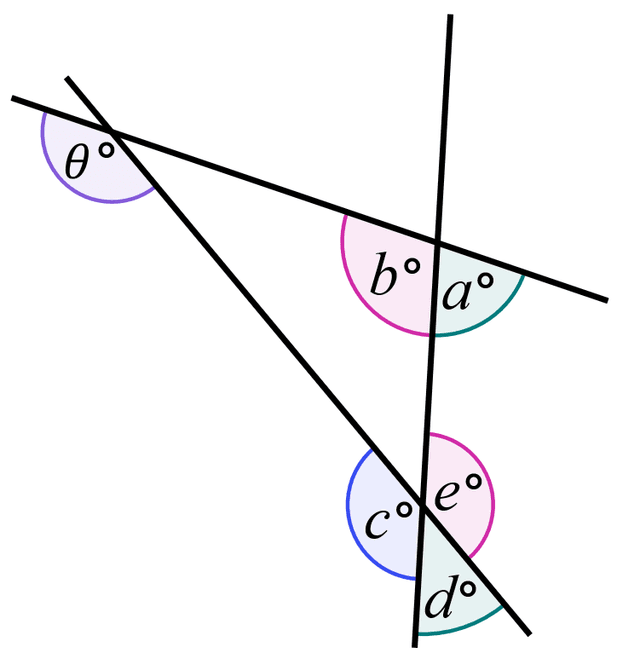Myths about teaching can hold you back


- Year 8
Corresponding angles
I can recognise that a pair of parallel lines traversed by a straight line produces equal corresponding angles.


- Year 8
Corresponding angles
I can recognise that a pair of parallel lines traversed by a straight line produces equal corresponding angles.
These resources will be removed by end of Summer Term 2025.
Switch to our new teaching resources now - designed by teachers and leading subject experts, and tested in classrooms.
These resources were created for remote use during the pandemic and are not designed for classroom teaching.
Lesson details
Key learning points
- The different arrangements of 3 line segments can be described and categorised.
- One of these arrangements involves a transversal.
- Corresponding angles can be identified in this arrangement.
- If the lines cut by the transversal are parallel these corresponding angles are equal.
- Knowledge of corresponding angles can be used to find unknown angles.
Keywords
Corresponding angles - Corresponding angles are a pair of angles at different vertices on the same side of a transversal in equivalent positions.
Transversal - A transversal is any line that intersects two or more lines at distinct (different) points (line, line segment or ray).
Common misconception
Transversals must intersect a pair of parallel lines.
Transversals can intersect any set of lines or line segments, no matter whether any of those lines or line segments are parallel or not.
To help you plan your year 8 maths lesson on: Corresponding angles, download all teaching resources for free and adapt to suit your pupils' needs...
To help you plan your year 8 maths lesson on: Corresponding angles, download all teaching resources for free and adapt to suit your pupils' needs.
The starter quiz will activate and check your pupils' prior knowledge, with versions available both with and without answers in PDF format.
We use learning cycles to break down learning into key concepts or ideas linked to the learning outcome. Each learning cycle features explanations with checks for understanding and practice tasks with feedback. All of this is found in our slide decks, ready for you to download and edit. The practice tasks are also available as printable worksheets and some lessons have additional materials with extra material you might need for teaching the lesson.
The assessment exit quiz will test your pupils' understanding of the key learning points.
Our video is a tool for planning, showing how other teachers might teach the lesson, offering helpful tips, modelled explanations and inspiration for your own delivery in the classroom. Plus, you can set it as homework or revision for pupils and keep their learning on track by sharing an online pupil version of this lesson.
Explore more key stage 3 maths lessons from the Geometrical properties: polygons unit, dive into the full secondary maths curriculum, or learn more about lesson planning.

Equipment
Licence
Prior knowledge starter quiz
6 Questions
Q1.TU is a straight line segment. Find the size of angle $$a$$, in degrees.

Q2.This diagram shows two intersecting line segments. Match each angle or justification for the size of angles $$b$$° and $$c$$° to the correct value or statement.
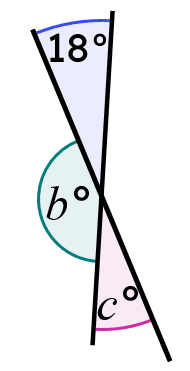
size of angle $$\text{ }b$$° -
162°
size of angle $$\text{ }c$$° -
18°
justification for angle $$b$$° -
angles about a point on a straight line sum to 180°
justification for angle $$c$$° -
vertically opposite angles are equal
not an angle on this diagram -
36°
Q3.Match the line segment to the correct description that completes each sentence.
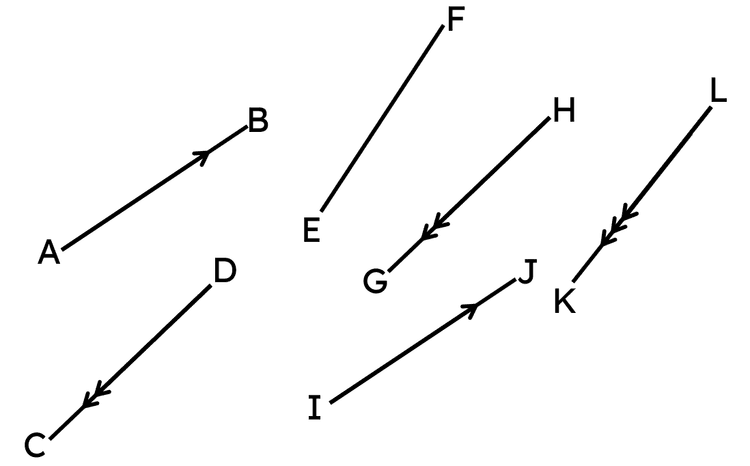
AB -
is parallel to IJ
CD -
is parallel to GH
KL -
is not parallel to any other line segment in this diagram
Q4.Match each angle to its size.

$$d$$° -
110°
$$e$$° -
70°
$$g$$° -
38°
$$h$$° -
104°
not an angle in this diagram -
56°
Q5.AB, CD, and EF are all straight line segments. By first calculating the size of angles $$j$$° and $$k$$°, find the value of $$(j+k)$$°.
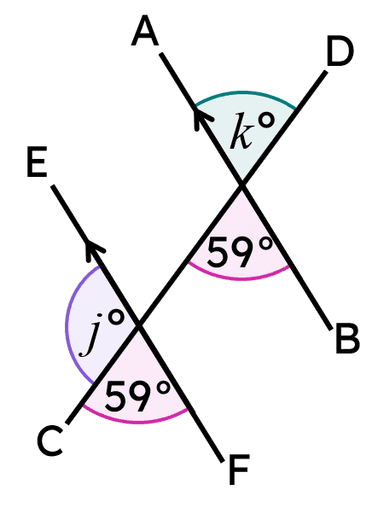
Q6.Match each line segment to its correct description.

AE -
is parallel to CD
AF -
is parallel to BD
BF -
is perpendicular to CD
AF -
a longer line segment with a gradient of $$-\frac{1}{3}$$
BD -
a shorter line segment with a gradient of $$-\frac{1}{3}$$
Assessment exit quiz
6 Questions
Q1.Which of these statements is true for a transversal?
Q2.Which of these line segments is a transversal?
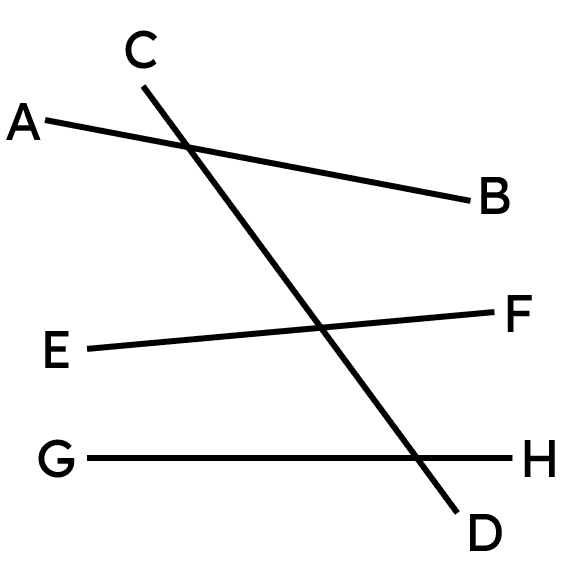
Q3.Which angle is corresponding to angle $$\theta$$°?
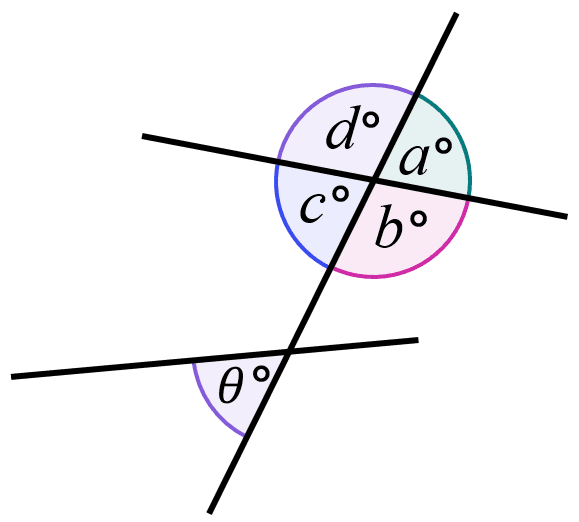
Q4.Which of these statements are correct for this diagram?
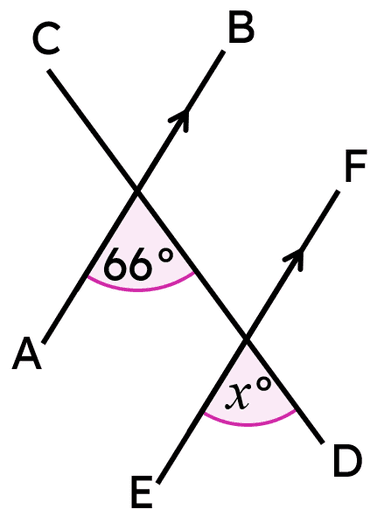
Q5.What is the size of angle $$x$$, in degrees?
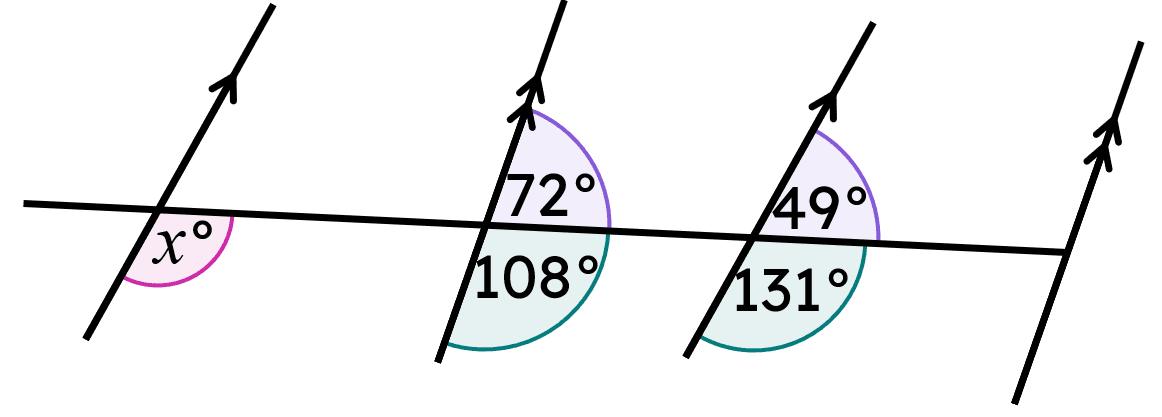
Q6.Which angles are corresponding to $$\theta$$°?
